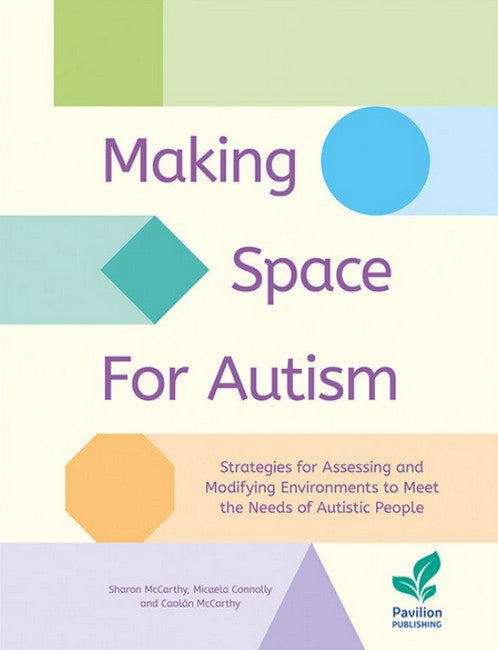Description
Sharon McCarthy is an author, course coordinator and lecturer. She delivers autism-specific training in different disability and education settings across Ireland, and in her role as a professional advocate, she ensures the autistic person’s ‘voice’ is always kept central. Sharon is parent to multiply-identified autistic children and acquired her own autism diagnosis in 2020, with an ADHD diagnosis following in 2022.
Micaela Connolly is a Senior Educational and Child Psychologist with 15 years’ experience of working on a
multidisciplinary team in a specialist autism service. Her work involves assessment; therapeutic interventions; training; developing and implementing programmes to advance understanding and awareness of autism.
Caolán McCarthy is an autistic Speech and Language Therapist. He has spoken at the IASLT Autism and Neurodiversity Special Interest Group annual conference and made contributions to the New National Training Programme for Special Educational Needs Assistants with University College Dublin and National Council for Special Education.
Chapter 1 –What is autism? An introduction.: the language of autism, the 24-hour child, intersectionality.
Chapter 2 –Trauma and its impact: masking and autistic burnout; emotional and physical responses; what a good support person looks like.
Chapter 3 -The environment: an explanation of its component parts; how supports, legal rights, pressures on families etc. can impact it.
Chapter 4 –Physical environment: what contributes to it; what a positive environment looks like;
how to complete an audit and improvements to be made (proactive and reactive).
Chapter 5 –Sensory environment: what is meant by this; what sensory processing/integration is; what a positive environment looks like; practical strategies and advice; auditing with a focus on individual sensory experiences.
Chapter 6 –Emotional environment: what emotional regulation/dysregulation and wellbeing is; how to ensure the
autistic person’s needs are met; completing an audit and strategizing to provide for emotional safety and wellbeing.
Chapter 7 –Communicative environment: how to ensure an autistic person’s voice is central; what a doubly empathetic environment looks like; respectful communication; auditing and strategies to help facilitate positive communication.
Chapter 8 –Internal versus external environment: the differences; how internal feelings impact; how to recognise
when you need to listen with more than your ears; person-centred accommodations that can be made;
auditing the environment from an internal perspective.
Chapter 9 -Social environment: what creates a social space; expectations placed upon the person based upon societal norms/expectations; how double empathy theory can be applied; social environment audit process; positive social strategies from a double empathy standpoint.
Glossary of terms / References / Useful resources

